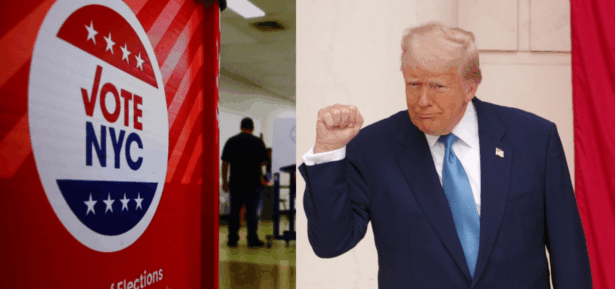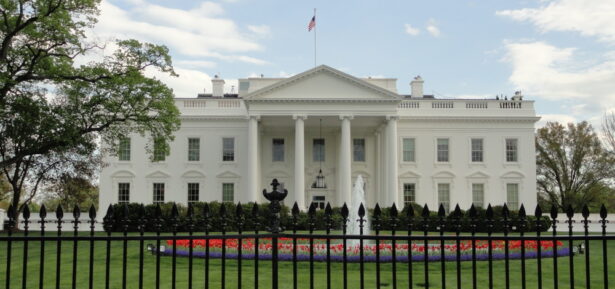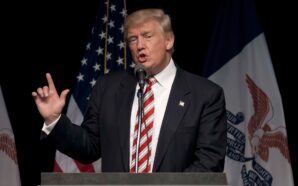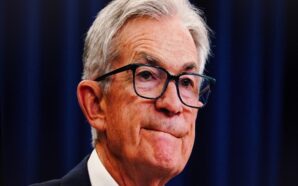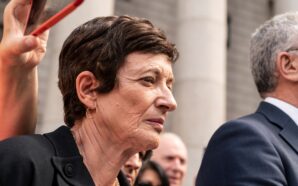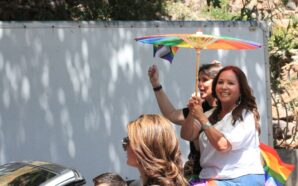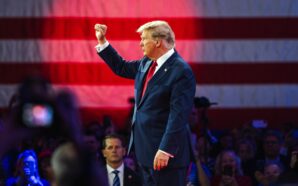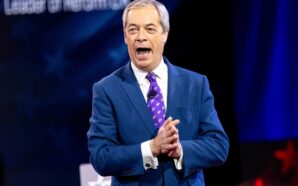
Peaceful rallies across all 50 states mark one of the largest single-day protest movements in U.S. history
The “No Kings” protests swept across the United States on Saturday, October 18, in what organizers and analysts are calling one of the largest coordinated demonstrations in American history. With an estimated 5 to 10 million participants spread across more than 2,500 rallies in all 50 states, the movement aimed to protest President Donald Trump’s second-term policies and what participants described as a growing concentration of executive power.
Background and Purpose
The demonstrations, led by a coalition of roughly 200 organizations including the ACLU, American Federation of Teachers, Human Rights Campaign, MoveOn, and the League of Conservation Voters, were planned as peaceful gatherings emphasizing unity and civic accountability. Participants wore yellow to symbolize solidarity and participated in online nonviolence and safety training sessions prior to the events.
The protests’ central message was opposition to what organizers called “authoritarian behavior” within the Trump administration. Their key concerns included restrictions on civil liberties, limits on free speech, strict immigration policies, and what critics view as executive overreach. The name “No Kings” reflects the movement’s belief that no president should act above the law.
National Scope and Turnout
Rallies were held in every state, from small town gatherings to major metropolitan events. Key locations included the National Mall in Washington, D.C., Grant Park in Chicago, Times Square in New York City, and large gatherings in San Francisco, Seattle, Austin, and Portland.
Boston drew one of the largest crowds, where Mayor Michelle Wu addressed participants alongside Sen. Elizabeth Warren. In Chicago, Mayor Brandon Johnson spoke before a packed audience at Grant Park. Aerial footage from multiple cities showed dense turnouts stretching across city blocks.
Organizers estimate attendance in the millions, with some describing it as surpassing the 2017 Women’s March and the 1963 March on Washington in scale. Early reports indicate the events remained largely peaceful, despite a few minor confrontations and isolated incidents.
Voices and Reactions
High-profile figures including Sen. Bernie Sanders, Sen. Richard Blumenthal, and actor Robert De Niro participated or voiced support for the movement. Sanders described the demonstrations as “a defense of democracy and accountability.”
Republican lawmakers and commentators dismissed the events as politically motivated, with House Speaker Mike Johnson calling it a “Hate America rally” and Sen. Ted Cruz urging investigations into protest funding. Governors in Texas and Virginia authorized National Guard deployments as a precautionary measure, drawing criticism from civil rights groups.
Online Response
The protests dominated online platforms over the weekend. Hashtags such as #NoKingsProtest and #DemocracyRises trended for several hours on X, while users shared drone footage of crowds in major cities. Some accounts accused organizers of exaggerating numbers, while others praised the events as a show of civic unity and peaceful resistance.
Outlook and Impact
As of October 19, no major arrests have been reported. Analysts believe the scale of the “No Kings” movement could influence upcoming midterm elections and intensify public debate over executive authority. Organizers plan to release verified participation numbers later this week and have announced follow-up initiatives focused on voter registration and civic education.
The protests underscore a renewed wave of political engagement in the United States. While interpretations vary, both supporters and critics agree on one point: the “No Kings” movement has made its mark on American history.
-
Credit: Shutterstock Everything You Need to Know President Donald Trump accused Senate Democrats of “holding the federal government hostage”...
-
Credit: Shutterstock Ruling marks key step in ongoing legal fight over federal authority and state control The Ninth Circuit...
-
Credit: Shutterstock The White House grounds haven’t seen a sight like this in decades — cranes, bulldozers, and construction...
-
Credit: Shutterstock Phil Mickelson isn’t just swinging golf clubs these days — he’s swinging at political rivals too. The...
-
Credit: Shutterstock The end of quantitative tightening may not be the market boost it appears to be Federal Reserve...
-
Credit: Shutterstock Here’s Everything You Need to Know On October 6, 2025, the U.S. Supreme Court quietly slammed the...
-
Credit: Shutterstock Trump Accused of Spinning a “New Big Lie” Amid Shutdown President Donald Trump is under fire again,...
-
Credit: Shutterstock Elon Musk has taken aim at one of the most powerful civil rights groups in America, the...
-
Credit: Shutterstock Democrat’s Arizona Win Slaps GOP, Fuels Trump Tensions Adelita Grijalva, a Democrat, won a special election for...
-
Credit: Shutterstock Here’s Everything You Need to Know About the 2025 Government Shutdown On October 1, 2025, at midnight...
-
Credit: Shutterstock Starmer Blames Brexit for Channel Crisis as ‘Farage Boats’ Row Sparks Political Firestorm The Prime Minister, Sir...
-
Credit: Shutterstock Pete Hegseth Declares New Era in U.S. Military With Bold Message: “No More Fat Soldiers” Secretary of...


